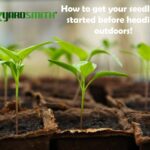
The content in this section should be moved to the “When to dig Hard and Heavy Soil” section. Then Change the title to: The Science of Planting Trees
Tree root systems are shallow and wide spreading. Based on nursery standards a transplanted tree has less than five to twenty percent of the fine absorbing roots that trees need for water uptake. This creates stress when the tree is planted in the landscape. The following steps will help promote rapid root growth to reduce the stress imposed by the limited root system.
Step 1: Determine the depth of the planting hole. The top of the root ball should come to the soil surface with no backfill on top.
Step 2: Dig a saucer-shaped plating hole three times larger than the root ball diameter. The saucer shape hole directs the roots to grow upward and outward into soil with higher oxygen levels and nutrients.
Step 3: Set the tree in place and remove all containers and or wrappers. Then shave off the outer 1 and 1 ½ inches of the root ball with a clean knife, pruning saw or pruners. This step is important to ensure the tree does not develop circling roots that can strangle the trunk in several years.
Step 4: Backfill the hole with soil to the knees or edges of the root ball and tapering down to the soil level. Do not place soil on top of the root ball.
Step 5: Water in the tree to allow the soil to settle, then backfill again as needed.
Step 6: Mulch around the base of the tree to conserve water and to keep weeds out. Mulching can increase the fine root development faster thus increasing a faster canopy growth.
Check out some of our digging tools by clicking here.



